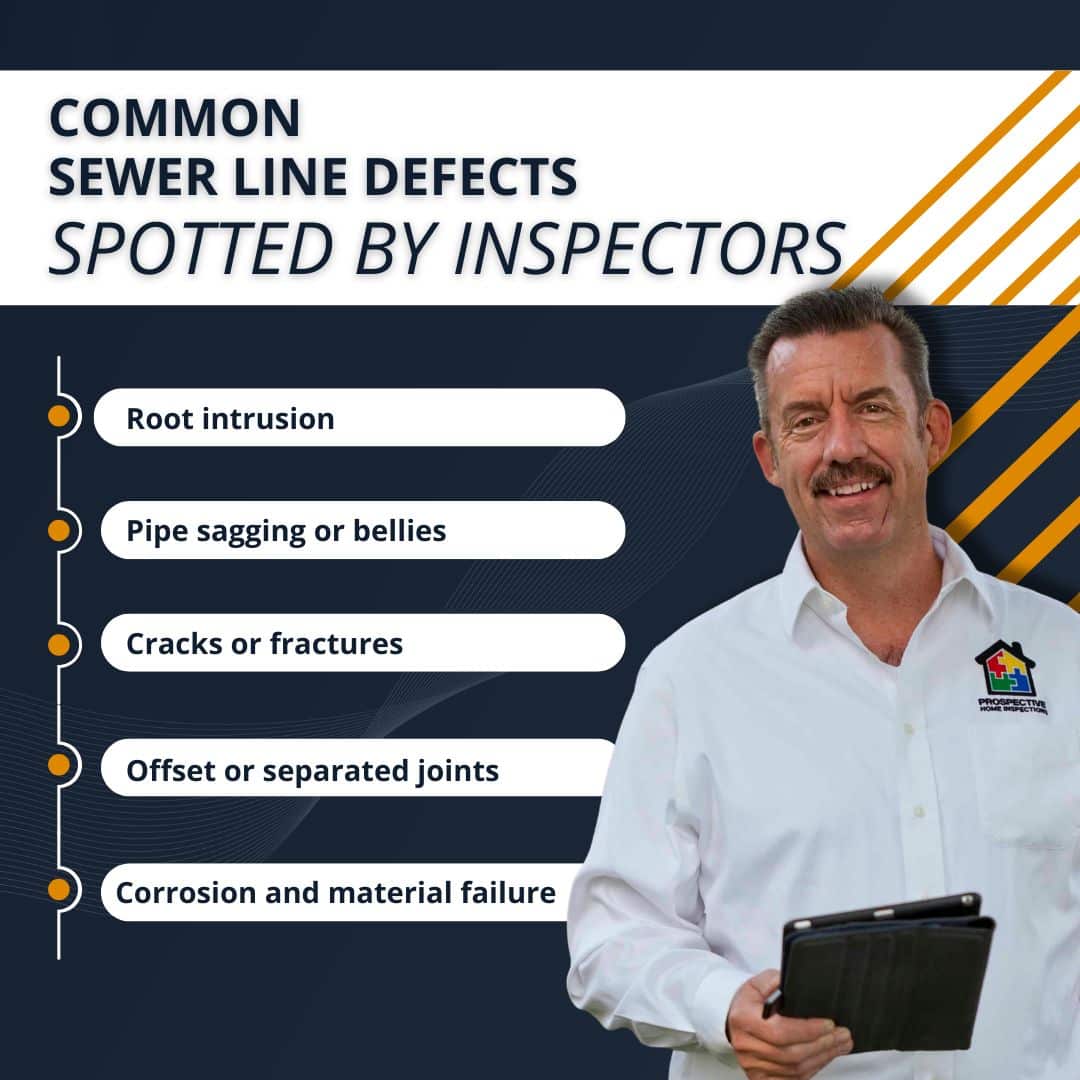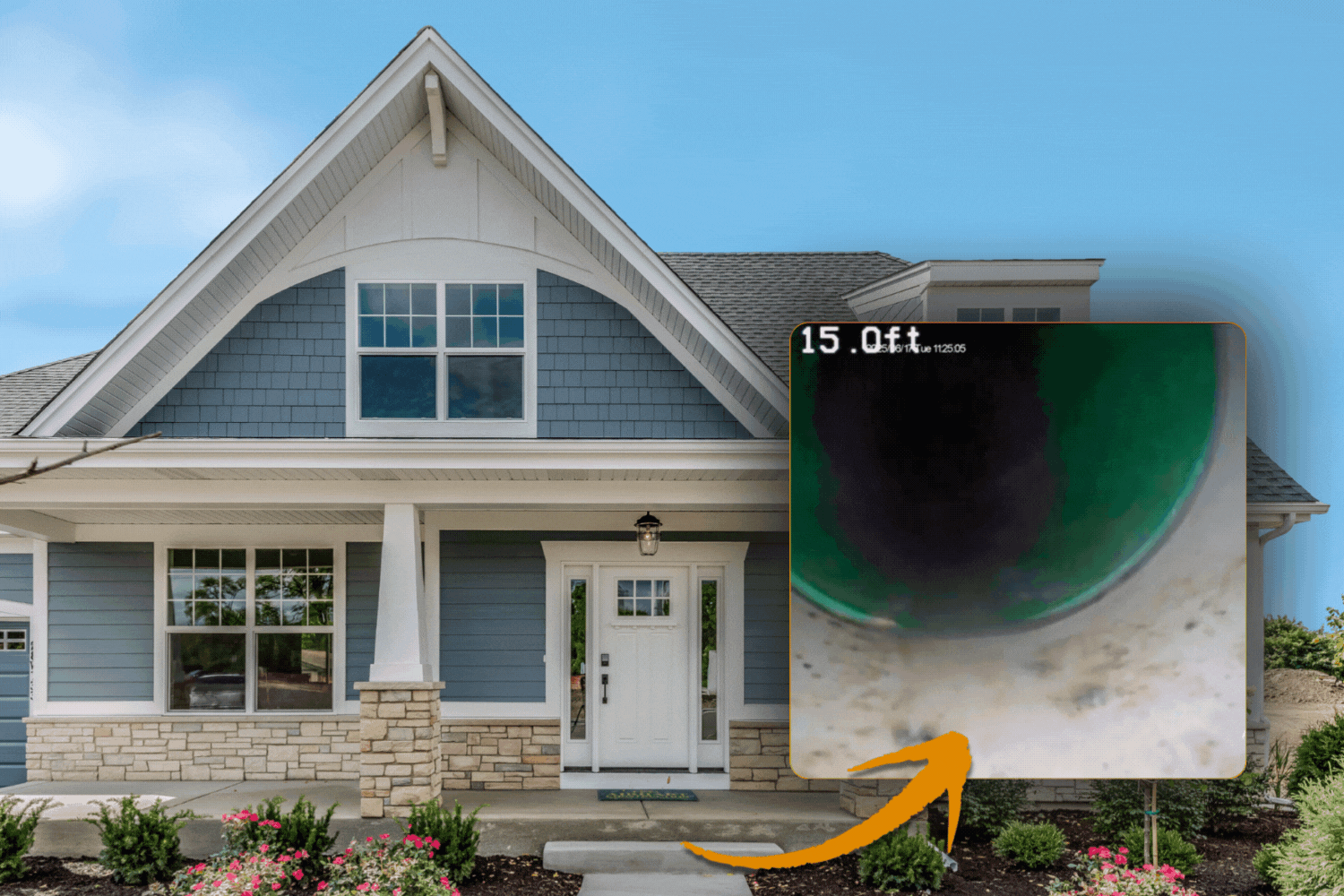When you’re buying a home, the sewer line probably isn’t the first thing you think about. It’s buried underground and out of sight, quietly doing its job to carry waste away from the property. But hidden problems in a sewer line can cause major headaches. A damaged or aging sewer line can lead to clogs, backups, water damage, and costly repairs.
At Prospective Home Inspections, we help buyers, sellers, and homeowners in Naperville and the surrounding areas understand the condition of this critical part of a home. During a standard inspection, we look for signs that could point to sewer line concerns, and we often recommend a sewer scope inspection for a clearer view. Here’s what to know about the defects we look for and why they matter.
Why Sewer Line Defects Are a Big Deal
Sewer line repairs can be expensive. Depending on the damage and how much of the line needs work, repairs often cost thousands of dollars. According to the National Association of Sewer Service Companies (NASSCO), the average sewer line repair costs between $3,000 and $7,000, with full replacements costing much more if excavation is involved.
For buyers, discovering defects before closing means you can negotiate repairs or credits. As sellers, addressing problems early helps prevent delays or surprises during the sale. For current homeowners, finding defects early gives them the chance to fix them before they cause damage to the home or yard.
Common Sewer Line Defects Found During Inspections
Sewer line problems often develop slowly. By the time signs appear, damage may already be done. Here are some of the most common defects we see or recommend checking for:
1. Root intrusion
In Naperville and similar areas with older neighborhoods and mature trees, root intrusion is a top cause of sewer line problems. Tree and shrub roots naturally grow toward moisture. If a pipe has even a small crack, roots can slip in and expand over time, causing blockages or breaking the pipe apart.
2. Pipe sagging or bellies
This happens when a section of pipe sinks due to shifting soil or poor installation. The low spot collects wastewater and solids, leading to clogs. Sagging pipes can be hard to spot without a sewer scope, but they cause slow drains and frequent backups.
3. Cracks or fractures
Pipes can crack or break as they age, or due to ground movement and pressure from above. This allows waste to leak into the soil and can invite pests or cause soil erosion.
4. Offset or separated joints
Pipes installed in sections can shift over time, creating gaps or steps where debris collects. This increases the risk of blockages and can make cleaning or repairs harder.
5. Corrosion and material failure
Older sewer lines, especially those made of cast iron or clay, can deteriorate as they age. Corrosion weakens pipes, leading to leaks or collapses. Many homes in Naperville built before the 1980s may have sewer lines at higher risk for this kind of wear.
Identifying Sewer Line Concerns
During a standard home inspection, we look for clues that could point to sewer line issues, including:
• Slow or gurgling drains
• Unpleasant odors inside or outside the home
• Soggy patches or sinkholes in the yard
• Stains or water damage in basements or crawl spaces
While we cannot see the buried pipe during a standard inspection, these signs often point to a need for a sewer scope. A sewer scope inspection uses a camera to check the inside of the pipe for defects. This service is especially valuable for older homes, homes with large trees nearby, or properties with a history of plumbing issues.

Why Buyers Should Care
A home’s sewer line is easy to overlook during the excitement of buying a property, but it’s a major system with costly repair potential. Sewer problems often aren’t obvious during a walk-through. Without proper inspection, you might not know there’s an issue until after you move in, and by then, repairs could be both stressful and expensive.
Having the sewer line checked as part of your due diligence helps protect your investment. It gives you information that can be used to negotiate repairs, ask for a credit, or plan for future work if needed.
What Sellers Should Keep in Mind
If you’re selling, a sewer line in poor condition can slow down or even jeopardize a sale. A pre-listing sewer scope can identify issues so they can be addressed early. Showing buyers that the sewer line has been checked and maintained can give your listing an edge, especially in older areas of Naperville where buyers may already have concerns about aging infrastructure.
Maintenance That Supports Sewer Health
Keeping a sewer line in good shape goes hand in hand with other smart home maintenance steps:
• Avoid planting trees or large shrubs near sewer lines
• Never flush anything but waste and toilet paper
• Keep gutters and downspouts directing water away from the foundation to limit soil shifting
• Schedule periodic drain cleaning if you’ve had past issues
Good habits can extend the life of a sewer line and reduce the chance of costly problems.
Addressing Common Questions
Is a sewer scope always needed?
It is not required, but it is strongly recommended, especially for older homes or properties with large trees nearby.
Who pays for sewer repairs during a sale?
This depends on the terms of the contract. If defects are found, buyers may ask for repairs or credits, but the agreement is between the parties.
Can a bad sewer line delay closing?
Yes. Major defects often need to be addressed before a sale can proceed, especially if required by the lender or insurance provider.
How long do sewer lines last?
A properly installed sewer line can last 50 to 100 years, depending on the material and soil conditions, but damage from roots or shifting soil can shorten that lifespan.
Video: Sewer scope inspection of a new construction property; A low spot in the sewer line (called a belly) where water collects instead of flowing.
Rocks causing a blockage, visual of scope travel distance.
Conclusion
A sewer line is out of sight, but it should never be out of mind during a home inspection. Whether you are buying, selling, or maintaining a home, knowing the condition of this important system helps you make smarter decisions and avoid costly surprises. Prospective Home Inspections offers guidance on when a sewer scope is a wise choice so you can protect your property and your investment.



